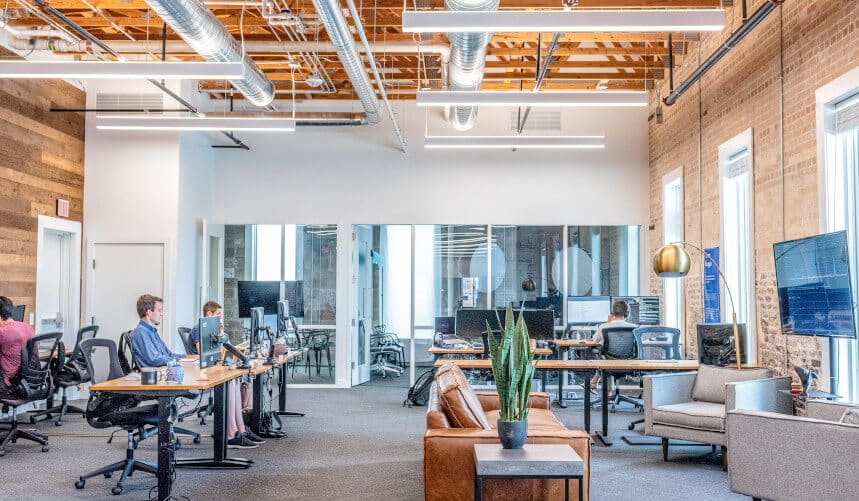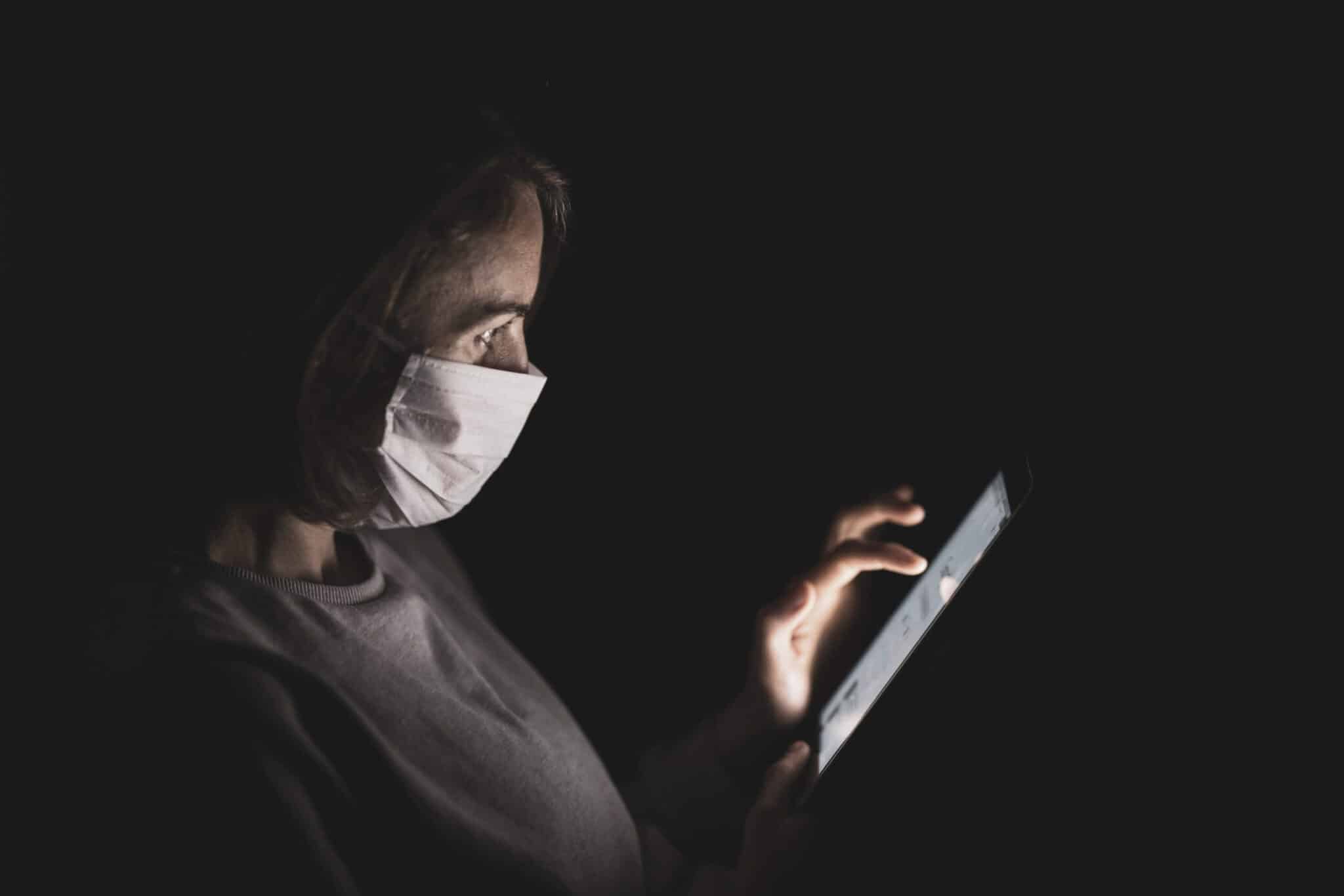
Right now, connecting and sharing knowledge is one of the most powerful things workplace teams can do to support one another as we all navigate facility management in a post-coronavirus world.
In our latest COVID-19 panel discussion, A Safer Return, five global workplace leaders shared the strategies they’ll be using to return employees to the office in the coming months. Our panelists include professionals in the following roles: Global Workplace Manager, Director of Global Facilities, Senior Workplace Manager, Director of Real Estate, and Director of Facilities.
To help you with your return to work planning, here’s a recap of the strategies below.
Quick links
- Creating a strategy for facilities in multiple jurisdictions
- Creating a safer physical workplace
- Sourcing and providing PPE
- Contact tracing and triage
Creating a strategy for facilities in multiple jurisdictions
If your portfolio includes facilities in various states (national) and countries (global), your return to the office strategy will need to cater to a variety of restrictions and guidelines at local, state, and national levels. Here’s how our panelists are going about it:
Create one overarching strategy for all of your sites
Several panelists said they were coming up with a single, overarching strategy that could work for every facility in their portfolio.
As one panelist stated, “We’re going to take all of those local government guidelines and try to package it as one single policy for the company. Some sites have more restrictions than others. But if we embrace being a lagger in this (return to the office) situation, then we’ll have the time to develop one overarching policy that can work for all sites.”
Create a tiered approach: global and local
If a one-strategy-fits-all solution isn’t going to work, an alternative approach is to develop a two-tiered approach that addresses global and local workplace guidelines that apply to each individual site.
A panel member said, “We have global standards we feel everybody must meet. And then local leadership at each individual site has developed a subset of local standards that incorporate local restrictions and requirements.”
Once a site meets both its global and local standards, it can proceed with reopening and returning employees to the workplace.
I have sites from the east to the west coast. And every single local government has a different idea of how they’re going to come back to work.
— Director of Facilities

You’ll need to make ongoing adjustments to the workplace as COVID-19 guidelines evolve. Here are some of the strategies our panelists are implementing as they begin phasing employees back to the office:
Workplace sensors
Workplace sensors are a huge advantage. Here’s how clients are managing with/without sensors:
- Set up alerts to monitor air quality
- Get alerted when employees are not distancing in a particular space
- Regular occupancy sensors at desks, conference rooms, sensors to track how many employees are in a space.
- Use workplace sensors to introduce a free addressing strategy that supports WFH and WFO employees
Sensors can do more: one Global Workplace Manager said, “Sensors are also helping us with our cleaning schedule. Being able to see which desks were used and which ones weren’t means that instead of having someone wipe down every individual desk and surface, we can use the sensor data to tell us which ones need cleaning.”
Directional signage
Directional signage on your virtual floor plans—and also on the floor itself throughout your facility—can help to control the flow of traffic in your offices.
- Use painter’s tape to install arrows and signage on floors
- Be mindful of pinch points like doorways, hallways, and elevators
- Give employees spaces to wait if they can’t pass through a one-directional zone without breaking social distancing guidelines
We’ve prohibited people from eating in our cafe, but we have one flow that brings people in to wash hands and grab a beverage. We have another loop for dry goods pickup.
— Director of Real Estate
Making physical adjustments throughout the workplace
What works for one facility may not work for another. In addition to the strategies listed above, you may need to make an array of other physical adjustments to ensure your facility complies with COVID-19 guidelines.
Here are some of the other (many!) adjustments that our panelists will be making throughout their facilities to create safer workplaces for employees.
- Shutting down faucets and stalls in bathrooms
- Providing waiting areas near elevators to prevent bottlenecks
- Installing employee badges to provide “no touch” access to facility doors and elevators
- Installing uni-directional doors where possible
- Moving to touchless transactions wherever possible: sensors on faucets, soap and towel dispensers, hand dryers, and even elevators
Leave “unusable” seating in meeting rooms
Leaving seating in conference rooms, but marking it as unusable, can help to keep employees distanced. A panelist mentioned, “Depending on the size of the room, we determined that keeping unusable chairs in conference rooms helped maintain the distanced design layout and anchor occupiable chairs in place.”

Sourcing and providing PPE
OSHA guidelines require organizations to provide a safe workplace to employees. But what does that look like in a post-coronavirus facility when PPE and cleaning supplies are difficult to source?
Buy in bulk
One solution for sourcing hard-to-find PPE and cleaning supplies was to buy in bulk.
A facilities manager divulged, “A lot of times, you’re required to purchase in bulk to get it at all. Instead of buying one box, I’ve bought palettes of hand sanitizer, knowing that it’s very likely I’m going to use it in the next six months.”
Provide “Welcome Back” packs
Some panelists are planning to provide Welcome Back Packages to employees upon their return, to ensure that every individual has what they need as soon as they return to the office.
These packages will include hand sanitizer, masks, and touchless door openers. Additional backup supplies will be on hand throughout the workplace.
There’s a major cost to finding hand sanitizer. A lot of times, you’re required to purchase in bulk to get it at all. Instead of buying one box I’ve bought palettes of hand sanitizer, knowing that it’s very likely I’m going to use it in the next six months.

Contact tracing and triage
Handling safety concerns in a post-coronavirus workplace is a sensitive issue. Panelists agreed that clear guidelines and communication are hugely important here.
- Introduce policies that encourage WFH for the display of any symptoms (even allergies) that could make other employees uncomfortable
- Make isolation rooms available to employees who begin to display symptoms at the office
- Set clear policies on what employees should do when they or someone else n the office displays symptoms

What other strategies will your team be introducing?
There’s no roadmap to managing the workplace in a post-coronavirus world.
Share your ideas in the comments section below and help other workplace teams create a safe return to work for their people.
Photo Credits: Austin Distel, Erik Mclean, Engin Akyurt, Brusk Dede, Annie Spratt, Thought Catalog




